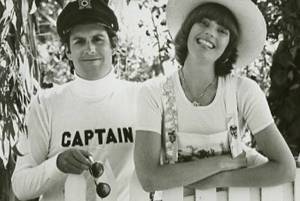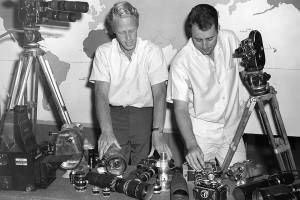By JACK McNEEL
They called themselves the Schitsu’umsh. This word means “Those who were found here” or “The discovered ones.” Their homeland stretched over roughly five million acres from eastern Washington through northern Idaho and into western Montana.
Early French trappers gave them the name “Coeur d’Alene.” Translated from the French language it means “Heart of the Awl” in reference to how sharp the tribal people were in trading with the trappers.
That huge homeland was reduced in size both by treaty action and by the Allotment Act of 1887, which divided the land into blocks from 40 to 160 acres for Indian families, although the government held ownership as the trustee.
The remaining tracts of land then sold to homesteaders who were given the right to settle there.
Today, the reservation covers 345,000 acres south of the city of Coeur d’Alene.
Christian religion came to them in the form of Father Desmet in 1842. His arrival had been forecast about 100 years earlier when Chief Circling Raven prophesied that men in black robes would come to the tribe. He watched for this man till his death in 1760.
According to another prophesy 20 years later, it would be another 60-year wait.
Father DeSmet, a Catholic “Black Robe,” arrived in 1848, and, six years later, established the Mission of the Sacred Heart at Cataldo.
The Mission still stands, the oldest standing building in Idaho. It’s a beautiful building built largely by tribal members. It’s located alongside I-90 near the town of Cataldo. In mid-August each year, the mission hosts the Cataldo Pilgrimage Feast of the Assumption and is open to everyone. Following a Holy Mass are lunch for all and a mini powwow.
The Mission is now an Idaho State Park, contains a museum, and is open for visitors who want to learn more about the tribe.
One of the primary winter villages was where the lake empties into the Spokane River, now home to North Idaho College.
In 2016, local residents voted to place a large statue of Chief Morris Antelope on that site, delighting the tribe. Chief Morris Antelope was a tribal leader soon after the Black Robes arrived. He spoke both the native language as well as English.
Current tribal chairman, Chief Allan, is a descendant of Morris Antelope and spoke at the gathering when the statue was erected.
The tribe was only involved in one war with the U.S. in 1858, which included several other nearby tribes. The U.S. army captured, then killed, over 800 horses belonging to the tribes. That slaughter took place along the Spokane River, just west of the Idaho-Washington state line. A memorial statue to that horrendous event is located along the river today.
The Coeur d’Alenes were very good farmers, and still are today, but the introduction of gaming and the subsequent Coeur d’Alene Resort and Casino provided jobs for tribal members and money for expansion elsewhere.
Circling Raven Golf Club, which is open to the public, adjoins the Resort and Casino. It’s a beautiful, natural course with no adjacent homes. Last July it was voted the number-one tribal golf course in the country.
Golf Digest Magazine also picked it in their Top 100 Golf Courses in the country. It’s an 18-hole course over 620 acres, covering an expansive 7,189 yards of play.
The University of Idaho conducted a lengthy study in 2014 about the economic impact of Idaho’s five reservations on Idaho’s economy. Those numbers will have increased since the study, but they give a perspective on the tribe’s importance.
The Coeur d’Alene Tribe is the second largest employer in the Idaho panhandle with 1,749 jobs and 4,360 jobs created in the region with an impact of around $330 million. Their operations generate about $13 million in taxes.
The Coeur d’Alene Tribe has maintained essentially the same leadership for 32 years. Ernie Stensgar served as chairman from 1986 to 2005 and Chief Allan has been chairman since that time with Stensgar staying on as vice chairman. Their steady guidance is responsible for much of the economic growth.
Another tribal member has risen not only in tribal standing but state and nationwide as well. Paulette Jordan is now running to be Governor of Idaho.
She attended University of Washington on a basketball scholarship and graduated with three degrees. She has served on the tribal council and was, until early February, in her second term in the Idaho House of Representatives.
She stepped down from that position to devote full time to her run for governor. She was the only Democrat north of the Boise Valley in the Idaho House—evidence of her strength even in a heavily Republican state. Quoting Paulette, “I always feel the sky is my limit.”
The tribe has been an outstanding neighbor to surrounding communities in various ways. In 1996, the tribe voluntarily began making annual donations of 5 percent of their gaming income to schools throughout the region. That later became a mandatory requirement of tribes.
Over the intervening years, the amount donated has reached upwards of $30 million. They have also quietly donated money to the Post Falls schools, to provide weekend food parcels for students whose families are in need. They began bus service in conjunction with the city of Coeur d’Alene, connecting several communities with free service.
Another donation of $100,000 helped the city build a new visitor center. It’s very likely the city would not have the massive Kroc Center were it not for the help of the tribe. The list goes on.
This past fall, the tribe updated its medical center in Plummer, now called Marimn Health. It’s the first Indian-owned health clinic in the nation that is open to both native and non-native patients.
They offer a large variety of health services under one roof. This includes not only medical but also dental, X-ray, lab services and counseling services.
The wellness center provides nutrition and nutrition services, which allow its providers to take a more holistic approach to treatment.
Marimn is a tribal word that translates essentially to “medicine” or “they treat others.” The health center serves people in Idaho, Montana, and Washington, regardless of their ability to pay, and employs about 200 people. According to tribal chairman Chief Allan, the center reflects the strong foundation of health care the tribe has built over the past 30 years.
The tribe has actively promoted tourism since the lodge, casino, and golf course opened, but last summer they added a whole new dimension to tourism by providing opportunities for visitors to take part in other activities.
Many options were made available and more will be added this year. Visitors can put together packages of activities that interest them, including going out with a guide to dig camas or other plants historically used by the tribe. Huckleberries are historically important as well, and visitors can participate by picking these berries with a guide. Fishing, rafting, and canoing are other options. A small buffalo herd roams nearby, and visitors can arrange t to view the tours to view animals, hear of their historical importance, and even sample a buffalo burger.
A noted bicycle trail, The Trail of the Coeur d’Alenes, begins near tribal headquarters and runs 73 miles eastward, nearly to the Montana border. The first 14.5 miles cross reservation lands and are managed by the tribe, including a major bridge that crosses the south end of Coeur d’Alene Lake.
The tribe is ready, options are many, and tourists have much to choose from.










